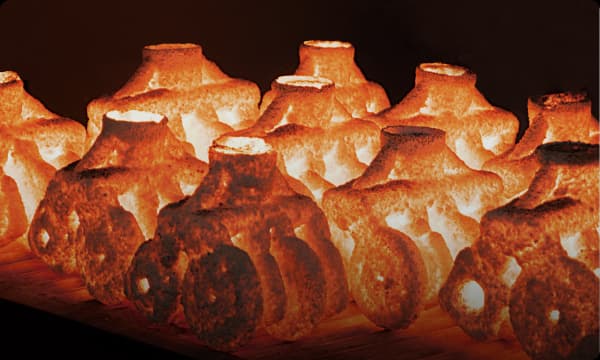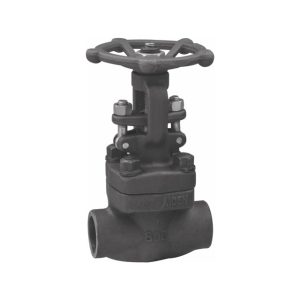Table of Contents
ToggleThe market for valves is growing in tandem with the advancement of society. Valves are everywhere, as they’ve become indispensable in construction, industry, people’s everyday lives, and other fields. As valves become more widely used, more manufacturers emerge, increasing the range of valves available. The globe valve and gate valve are the two most commonly used valves.
GLOBE VALVES
One of the most commonly used valves is the globe valve. When using a globe valve, there will be no friction pressure. Furthermore, effective sealing efficiency, reliability, ease of manufacture, and cost savings on a large scale are all guaranteed.
These valves are widely used for highly viscous media, corrosive, high-pressure, and high-temperature systems, and can act as control valves.
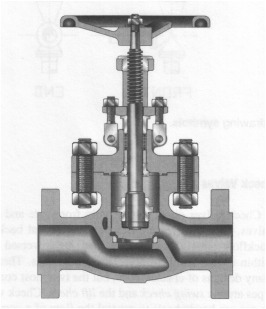
Source: https://www.sciencedirect.com
GATE VALVES
A self-sealing valve is a gate valve. Traditional gate valves are essentially manually sealed. As valve equipment advances, today’s gate valves can use medium flow pressure to press one closing face to another closing face. As a result, the two sealing surfaces are closely pressed together to ensure a strong seal. This is what is referred to as “self-sealing.”
The wedge is responsible for opening and closing the gate valve. However, it can only travel in one direction, i.e., the gate valve cannot control the flow. Wedge follows the stem, keeping it vertical to the river. The handwheel’s rotary motion is transformed into a straight-line indication of the stem; that is, the torque is moved into thrust through the nut at the top of the valve and the guide groove on the upper part of the valve body.
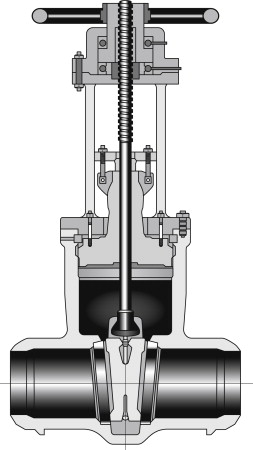
Source: https://www.sciencedirect.com
Difference between Gate Valve and Globe Valve
Globe valves vs. gate valves are used in several applications, including the oil and gas industry. Each valve, however, performs a different role. The critical distinction between a globe and a gate valve is the shape of both valves’ inner elements and the flow pattern. A globe valve’s throttling performance is excellent, while a gate valve is not used for throttling.
The shape of Both Valves’ Inner Elements
The globe valve’s disc serves as a plug. The plug rotates along the body’s axis, firmly pressing against the sealing face of the seat, and is driven by the stem. The globe valve must be mounted in the specified direction indicated on the valve body.
• The space between the disc and the seat determines the flow rate of a globe valve. The greater the distance between them, the more liquid can flow through the valve.
• Globe valves often have a stem that connects to the bonnet just above the disc, ensuring a strong seal when the valve is completely closed. As a result, globe valves are less likely than other valves to practice seat leakage.
• Gate valves are not the same as globe valves in terms of design. These valves have parallel or wedge-shaped gate faces instead of a disc, and they may have a rising or non-rising stem. This makes it easier for staff to decide if the valve is completely open or fully closed.
• A difference between a globe and a gate valve is the opening and closing geometry of the disk and bench.
• The closure portion of a gate valve is a plate or disk that travels parallel to the seat’s plane. A well-known example is a dam’s gate.
The Flow Pattern
• Globe valves are commonly used to control, stop, and start flow inside a pipe. Aspherical bodies and a disk are used to create them. The globe valve’s disc is built to travel up and down about the seat. When the valve begins to close, these vertical motions cause the gap between the disc and the seat to shift slowly. This helps the valve control flow within a pipeline by allowing it to throttle.
• As opposed to gate valves, globe valves cannot close tightly.
• In pipelines, a gate valve has a tight shut-off capability. The gate valve is used upstream of the globe valve because of its close shut-off capability.
• This gate and globe valve combination might be seen on a pump’s discharge tubing.
• When compared to a gate valve, a globe valve takes more torque to operate.
• When designing automatic and motor-driven valve actuators, this higher power requirement for globe valves is considered.
• The closure element of a globe valve is commonly referred to as a “poppet,” and it moves perpendicular to the seat’s plane.
• The globe valve may be fixed while it is still in service, whereas virtually all gate valves must be removed from the piping system to be repaired.
• A globe valve may be opened in the presence of high differential pressure, while a gate valve would bind and be unable to be opened. The seat will score and leak if you attempt to open against a high DP.
• A globe valve’s CV vs. percent open characteristics are nearly linear. In contrast, a gate valve’s CV vs. percent open characteristics are severely parabolic and cannot be used for regulation.
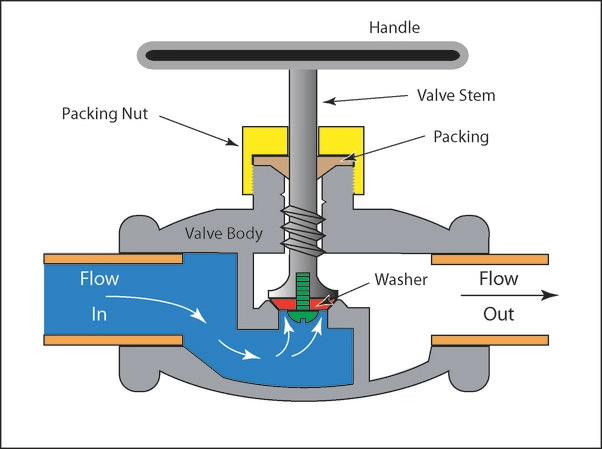
Source: https://www.quora.com
• Gate valves are also used in the gas and oil industry in plants. They are, however, only intended to start and stop the flow inside a piping system. They will, sadly, be unable to control the flow.
• These valves are also known for having low-pressure drops and little fluid flow resistance, particularly when fully open. Most notably, gate valves can be configured to flow in any direction. On the other hand, Globe valves are unable to do so.
• Gate valves are not intended to control flow, and when they are, we see noise, vibration, and seat/disk damage. A globe valve may stop and resume the flow if a gate valve is unavailable. Isolation is usually achieved with the use of a gate valve.
• Since there are prototypes for both directions of flow, a gate valve may be used in both directions.
• Flow can be directed in both directions through the same gate valve.
• A globe valve’s flow path is normally indicated on it, and it is used following that.
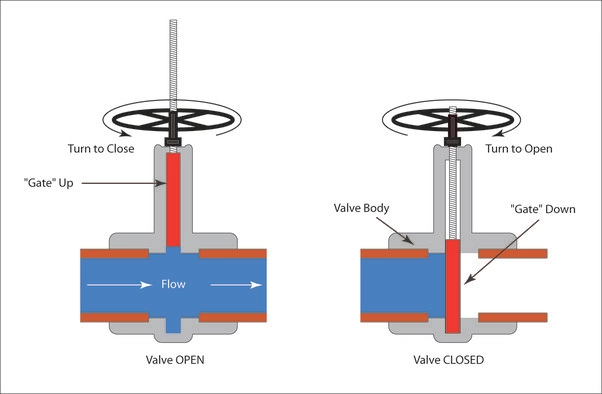
Source: https://www.quora.com
Conclusion
The critical distinction between a globe and a gate valve is the shape of both valves’ inner elements and the flow pattern. A globe valve’s throttling performance is excellent, while a gate valve is not used for throttling. The best valve for isolation is a gate valve, whereas the best valve for controlling or throttling the flow is a globe valve.
If you wanna know more about other types of industrial valves, you can choose 9 types of industrial valves to learn more.
